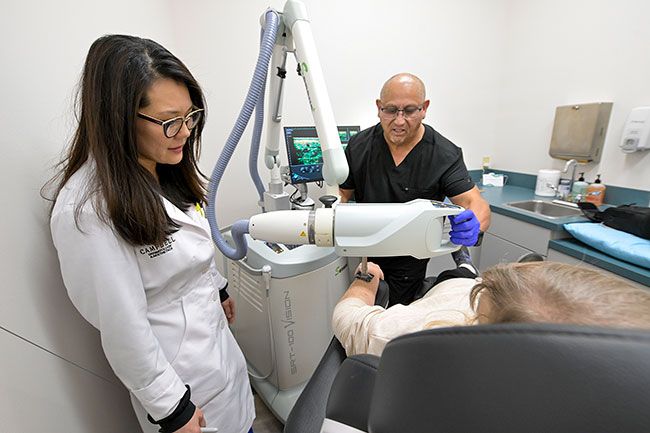Starla Pointer: Best of intentions need to be built into daily routine


Yes, I served on the local American Cancer Society Board for several years, and we promoted sunscreen use as part of cancer prevention. Yes, I do a lot of walking, and I’ve often – but not always – carried sunscreen to spread across my nose and cheeks. And yes, many years ago, I interviewed Dr. Ecker, now retired, about the importance of using sunscreen.
So no excuses. I know about the risks of skin cancer from sun exposure.
My father, who served in the Pacific on a Merchant Marine ship during World War II, and later worked in the construction and lumber industries, had skin cancer. I’ve known many others, too.
But why have I only sporadically opted for skin protection? Dermatologist Stephanie Campbell would say it was because I’d never made sunscreen part of my daily routine.
Whether or not it’s sunny, everyone should protect their skin with sunscreen on a routine basis, Campbell said recently, when I interviewed her in her McMinnville office.
She teaches her children to apply sunscreen when they brush their teeth, adding one routine to another. And she encourages people to continue that routine year-round if they’ll be outside, even on Oregon’s cloudy, rainy days.
Even without direct sunshine, she said, dangerous UV rays can come through, causing harm to unprotected skin. Genetics, history of sunburn and length and degree of exposure also affect the risk of damage.
In addition to sunscreen, Campbell recommends wearing sunglasses, lip protection and a hat or another type of coverup to protect the scalp, face and back of the neck.
She’s sets a shining personal example: She wears hats and coverups and uses sunscreen, blessing herself with flawless skin.
When choosing a sunscreen, Campbell recommends types that contain minerals. The American Dermatological Association recommends an SPF or sun protection factor of at least 30, but she recommends an SPF of 50, if not higher.
Both the mineral content and the SPF should be listed on the bottle or tube. Campbell said there are plenty of choices available, including lotions and gels, so consumers can pick the type that feels best to them.
They should also look at the fine print on the container to see how long a product offers protection, how often it should be applied and whether it’s water-resistant. “Choose a water-resistant type for sports or swimming, hiking and biking,” she said.
When they apply, she said, most people need to put on more than they think. She suggests applying one coat, letting it dry a moment, then adding another. If they’ll be outside for a long time, they should carry sunscreen with them so they can reapply it later.
All very good advice, I concluded during the interview. I left Campbell’s office with a few sunscreen samples, vowing I would start a routine of applying protection.
The next morning, I brushed my teeth and rushed off to catch the bus to work. No sunscreen.
But at the bus stop, I dug through my bag, found one of those samples and smeared sunscreen over my face, neck and hands, all of which were exposed to the sun. I felt good about that.
At my first stop, my first interview of the day, I was greeted warmly. Then the person asked, “What’s that white streak on your nose?”
Oops. Good try, but I guess I should apply the sunscreen before I leave the house — and maybe take a quick peek into the mirror, as well.
About the writer: Starla Pointer is a Linfield University graduate who has written for the News-Register since February 1982. A native of the Southern Oregon Coast, she lives in Carlton with her husband and cats. She likes to read, cook, work in the yard, take walks and swim laps. She is always looking for the next interview.








Comments